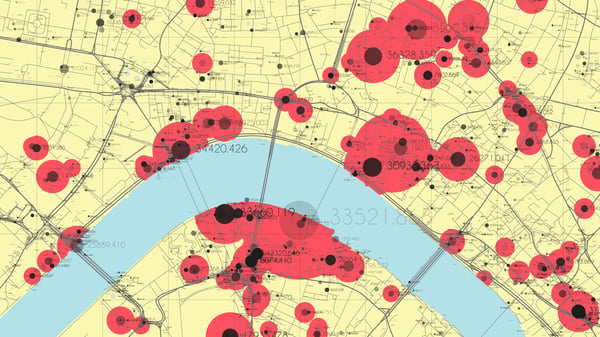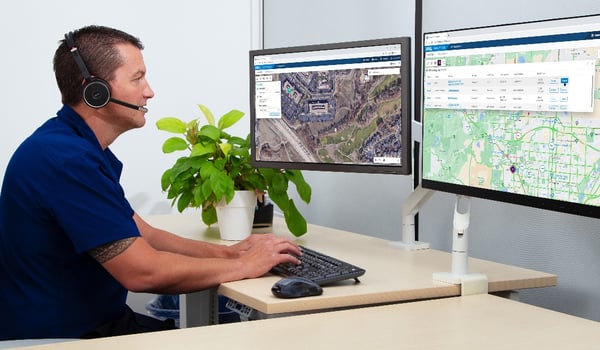4 Must-have Data Points for Dispatch-Billing Alignment and Maximum Reimbursement
5 KPIs to Measure to Improve Fleet Safety & Savings
Butler Medical Transport operates more than 67 ambulances throughout Maryland and Washington, D
Was this information valuable?

Butler Medical Transport operates more than 67 ambulances throughout Maryland and Washington, D.C., Maryland doesn't allow 9-1-1 for commercial ambulance services, and most of our transports are non-emergency. The four percent of calls that are emergency calls we do are lights and sirens transports between facilities for critically ill patients coming from rural facilities. Last year, we put almost one and a half million miles on our ambulances, that's why safety and the amount of miles of traveled has become so critical. Knowing how to manage and interpret key performance indicators (KPIs) for fleet efficiency are key to a successful return on investment (ROI) for our safety program. With the dashboards within Road Safety, and our driver feedback system, these key pieces of data are at our fingertips. The following details the five KPIs we measure in order to improve fleet safety and savings at Butler Medical.
KPI #1: Overall Driver Score
For those you that don't use Road Safety, and aren't familiar with it, the overall driving score is a formulary of average between counts (ABC), which is the number of miles between a violation or an occurrence. A score of 10 is phenomenal, a score of one isn’t acceptable. Our baseline, or standard line, at Butler is six. In other words, if our drivers score a six, they are operating the vehicle to our standards; if a driver is below a six, there is work that needs to be done to improve the quality of driving.
Investing a couple thousand dollars a year in these incentives is well worth it for us when their improved driving habits result in improving safety, reducing accidents reducing injuries and reducing insurance premiums.
Even if a driver is at six, we still try to push our drivers to continually increase their performance with the goal of eventually reaching a 10. EMS providers as a general rule are competitive people. At Butler, we try to exploit this common trait in our drivers in order to make their driving scores better. Which in turn makes them safer people and makes safer ambulances out on the road. To do this, we created an incentive-based program that did several things for the drivers.
- The top driver every month gets a gift card, and the top three drivers get various gift cards of varying amounts.
- The top driver for every year gets to go to Walt Disney World. Most EMS drivers make relatively low wages and are EMTs that make anywhere between $12 and $16 dollars an hour, and typically can't afford a Walt Disney World vacation.
- We also have a vanishing deductible program where we give some drivers money back at the end of the year. If our deductible goes down, and a driver has a great overall driving score, we reward them with a check from the company every month.
Investing a couple thousand dollars a year in these incentives is well worth it for us when their improved driving habits result in improving safety, reducing accidents reducing injuries and reducing insurance premiums.
How do we deal with drivers that sometimes fall below the threshold? First of all, we make sure that we’re looking at both the short term and long term numbers. A driver that logs low mileage numbers during a month may have a skewed overall driving score. This may cause them to take longer to increase their driving score if they have one bad day. In order to get them above the threshold, we invest in training them to become safer drivers. Just because someone has a low driver score at one point in time, doesn’t mean they aren’t capable of being trained into a stellar driver. This has been highly successful for us, because the minute your safety program becomes punitive to your employees, the employees stop buying in to the program. And we know the success of our program is largely in part to employees believing in the program.
KPI #2: Spotter Violations
Even if your driver scores are all top notch, you can still have safety issues that can be costing your company money or be endangering your employee safety. The second KPI we look at is spotter violations. You can have an employee with a great score of a six, but with 144 spotter violations. That's a problem. So what do spotter violations tell me? They tell me we may have personnel issues, partner disputes or maybe that one partner refuses to get out for the other partner. Maybe he's intentionally trying to lower the partner score. Maybe that the employee who has a lot of spotter violations is just trying to get by with a passing grade. Spotter violations also show a lack of concern for equipment. These are the kind of violations that drive mechanics crazy, because you can have the safest drivers in the world that drive at a seven or eight, but constantly ding bumpers. Tracking this KPI helps you identify a) if you have a problem and b) what may be causing the problem so you can then address the issue by putting the proper policies in place.
KPI #3: Engine Idle
The KPI for increasing fleet safety and savings is engine idle, which can be a function of policy procedures. What are your policy procedures? Do you allow people to idle all the time? If so, then maybe this KPI doesn't help you. Maybe you have different policies of when they can idle the engine. However, engine idle can be important for safety and security if your crews are leaving the vehicle idling and they aren't even in it. Most hospitals also don’t like the fumes from an idle ambulance outside their ER.
I believe that leveraging engine idle reports translates directly to money in the bank, because the more time the vehicle is not running, the less fuel you're spending.
And of course, engine idle can tell you about fuel mechanical savings and efficiency. The longer you let the vehicle idle when it's not necessary, the more fuel you spend and the more mechanical issues you can encounter. We’re able to drill down into the KPI within Road Safety. You can tell how many times a driver left a vehicle idle. You can even benchmark the engine idle based on your organization's policies and procedures. I believe that leveraging engine idle reports translates directly to money in the bank, because the more time the vehicle is not running, the less fuel you're spending.
KPI #4: Seat Belt Violations
The fourth KPI we look at is seat belt violations. You can get an accident that's not your fault. Which means that someone who has a good driving score can still become injured because they fail to wear their seat belt. This could result in that driver receiving workers compensation. I think the disregard of wearing seat belts also speaks to the attitude of the driver. In the state of Maryland, it’s the rule of law to wear a seat belt. If they're not willing to do that, what other things are they not willing to do? Are they likely to participate in other illegal behavior? For example, if you're not willing to wear your seat belt are you also willing to ignore the law about texting and driving or hand-held use of a cell phone? This may not apply to everyone, but often what you'll find is people that have complacency for one law and one safety violation are likely to have complacency for another violation, which is why this is a top KPIs we look at for safety and fleet efficiency.
At Butler, we have zero tolerance for seat belt violations, because we want to make sure the employees are safe. And not just safe when they're the driver, we also don't want them to get injured when someone else runs into them.
KPI #5: Extreme Violations
Extreme violations can tell you a couple things:
- You have a vehicle or equipment failure.
- You have a problem with your Road Safety box.
- Your employees intentionally disconnected a speaker.
The whole point of Road Safety is a positive proactive driver modification feedback to change the driver’s behavior so they don’t get an extreme violation such as extreme over speed or force violations. It should be next to impossible to get into an extreme violation, unless you don't care or you’ve unplugged the speaker. If this is the case, this driver needs immediate attention. They either need to get re-trained or taken off the road quickly, because they're the most likely to have an accident or have an injury.
Related Posts
How EMS Agencies Can Reframe Need and Refocus Resources With Geospatial Analytics
How To Minimize Radio Chatter and Reduce Guesswork With Smarter Dispatch Resource Management
ZOLL Pulse Blog
Subscribe to our blog and receive quality content that makes your job as an EMS & fire, hospital, or AR professional easier.
ZOLL Pulse Blog
Subscribe to our blog and receive quality content that makes your job as an EMS, fire, hospital, or AR professional easier.





